
Welcome to the first Wild vS Data Reaper Report!
We are the experts from the /r/WildHearthstone subreddit and we have partnered with Vicious Syndicate to create the Wild Data Reaper Report! We will be contributing the write-ups for the report which will be backed up by powerhouse statistics for which Vicious Syndicate has become famous. The data presented in this article is based on 50,000 games.
For those not yet in-tune with the Wild game mode, we will give you a brief recap of Wild since Standard’s introduction before jumping into the state of the Meta today. When Standard broke off from the original game mode, Wild only had Naxx and GVG to set itself different from Standard. The Standard and Wild Meta games were very similar through Whispers of the Old Gods and Karazhan, with a few wild exclusive decks throughout, such as Secret Paladin. When Gadgetzan was released, a new beast – or should we say pirate – was released on the wild Meta. Players quickly realized that Patches is exceptionally strong with the wild-exclusive card Ship’s Cannon, and the deck has been extremely popular in the Meta since then (It hasn’t fallen out of /r/WildHearthstone’s Tier 1 since the introduction of the tier list).
When Un’Goro was released and the Year of the Kraken gave way to the Year of the Mammoth, three more sets rotated to Wild, making ~30% of the available card pool exclusive to Wild. This resulted in the Wild game mode taking on a Meta less driven by the strongest cards currently in Standard, and acting as a rogue’s gallery of some of the strongest decks of all time. When those who are not commonly exposed to Wild think about the game mode, many think of the once Meta-defining Dr. Boom and Piloted Shredder, due to their high power level relative to other pre-Standard cards. However, you will find these cards in very few of the top tier decks. Independently, these cards are quite strong, but Wild thrives on synergy, and at this moment, most decks rely heavily upon synergy to produce turns that are more powerful than any of those available to ‘good stuff’ decks.
Quick Links
Class/Archetype Distribution | Matchup Winrates | vS Power Rankings | Class Analysis & Decklists | How to Contribute | Credits
Class/Archetype Distribution
When the Wild Heroic Tavern Brawl was released, the Meta was shaken up by the influx of many new and returning players trying to innovate. At the same time, the Wild Meta was still developing from the introduction of Un’Goro. At present, the Meta has yet to be solved, as it has been traditional for the Wild Meta to move slower after an expansion as compared to Standard. There is much room for innovation at the moment as several of the top tier decks have yet to be refined.
When looking at the play percentages of the decks on the Wild ladder, it is astounding to see how many people are playing Pirate Warrior. There are more Pirate Warriors than players of seven other classes! Pirate Warrior is the enemy at the gates which keeps the Meta honest and prevents it from devolving into the greediest decks being the best decks. Control decks must be able to beat Pirate Warrior, and the success of a deck on ladder has, in the past, been measured by how well it does against Pirate Warrior. Recently we have anecdotally seen that Pirate Warrior has decreased from its pre-HTB density, which has led to an increase in midrange decks. On the control side of the Warrior class, we see Taunt Warrior slightly edging out Control Warrior at all ranks, while staying fairly consistent in play rate.
Mage is a very diverse class in wild with a pretty even spread between the front runners of Reno and Tempo Mage. Coming up in the middle of the pack are Freeze and the new Secret Mage, while Exodia Mage takes up the rear. At higher ranks, there is an increase in the slower, control forms of mage, while Tempo Mage thrives at ranks 15-5.
Priest is a very interesting class, especially when you look at the discrepancy between deck choices at different skill levels. At the lower ranks, Reno Priest is dominant, even coming within 1% of Pirate Warrior. Combo Priest is the least common form of Priest at this level. But when looking at the legend data, the rates of these two decks swap. Combo Priest increases by a little more than 2.5x in popularity, while Reno Priest decreases to a third of its lower rung’s popularity. As you climb the ranks, the amount of Priest on ladder decreases.
Shaman is in the middle of the pack in play percentage, and due to its versatility, its archetypes are fairly even across the board. It is interesting to note that the three main archetypes of Shaman (Midrange, Aggro and Control) all seem to increase in popularity at higher levels of play, with Aggro Shaman having a pretty significant jump in particular.
Midrange Paladin and Secret Paladin are the Yin and Yang of the Paladin class. When one has a high play percentage, the other has a low one. At legend there is more Midrange compared to Secret, while at lower ranks we see more Secret Paladin and less Mid Paladin. Also in the mix is Murloc Paladin, which is fairly consistent throughout the ranks (not to be confused with the combo deck, Anyfin Paladin).
Druid is one of the least played classes at lower ranks, but is one of the most played at higher ranks. When looking specifically at Egg Druid, the archetype increases in popularity just short of threefold from ranks 15-11 to Legend.
Warlock maintains playability in Wild compared to standard due to Reno Jackson. Renolock maintains the lead at the head of the Warlock class by being able to heal to full against the endless aggression of pirates on ladder. Zoo is a ghost of its former self at lower ranks, and almost non-existent from rank 5 up to legend.
Hunter is the weakest class in Wild at the moment but Midrange Hunter, its main viable archetype, has a higher play percentage than the strongest archetypes of three other classes. Don’t count Rexxar and Alleria out yet.

From our previous /r/WildHearthstone tier lists, the biggest surprise to us was the hidden strength that Midrange Paladin has against the rest of the Meta. This deck has always existed in the Wild format, but was revitalized by some of the new Un’Goro cards such as Lightfused Stegodon, Stonehill Defender and Sunkeeper Tarim. With a fairly even chance against Pirate Warrior and the strength to beat down Control decks, it makes sense that the deck is able to perform so well against the current Meta. One thing that we have noticed is that the lists on ladder of Midrange Paladin have been fairly unrefined. We expect this deck to take off and only become more powerful when more optimized decklists develop.
Pirate Warrior has been a force to be reckoned with ever since the Mean Streets of Gadgetzan expansion arrived, and it doesn’t seem like it will be leaving any time soon. With the most explosive starts, this is the premiere aggro deck on ladder. Ship’s Cannon takes this deck to the next level, which explains why Blizzard ultimately waited until Ship’s Cannon rotated out of standard before releasing Patches.
Thankfully, Blizzard has introduced Golakka Crawler, which has been one of the most used Wild tech cards. This brings Pirate Warrior down from an absurd power level to one that is only extremely powerful. Pirate Warrior is often used as an early climbing deck at the start of the season, which ultimately results in a bubble forming at the bottleneck from rank 5 to 1, where we find the highest percentage of pirates. At these ranks you either need to find a deck that beats Pirate Warrior consistently, or let Patches take charge and join the pirate crew.
Secret Mage has just recently peeked its head out of the woodworks and is beginning to flex some hidden muscles. With only a few new cards from Un’Goro, the deck has reached a point of saturation, and with the vast amount of secrets available in Wild, the deck has found a spot which has typically been filled by Flamewaker-driven Tempo Mage. Secret Mage shines against decks that have lower amounts of removal. Once the deck has gotten into its stride, due to the vast difference in secrets, the deck is very hard to interact with, and often high-rolls opponents, winning games unexpectedly. At the moment, this deck is very new to ladder and, much like Midrange Paladin, is relatively unrefined. We believe that this deck has the ability to grow in power. However, part of its strength comes from the non-linear gameplay that it forces its opponent to play; if this deck ever hits a critical mass, it will do so as a result of people not completely knowing how to play around some of the secrets, as there is a wide variety of them.
Dragon Priest is one of the strongest midrange decks on ladder, right behind Midrange Paladin. The deck attempts to get ahead early with its low attack/high health minions and close out the game against aggro by taking control of the board or by putting high pressure on control decks with cards like Blackwing Corruptor and Drakonid Operative. With the ability to be either proactive or reactive, Dragon Priest has become a jack of all trades deck, with very few polarizing matchups. It is one of the most consistent decks on ladder, and has the ability to be piloted efficiently by anyone who considers themselves knowledgeable about every matchup.
Egg Druid is a deck whose power level is much higher than its standard counterpart, even though that deck is one of the best in its format. Egg Druid revolves around flooding the board with small, sticky minions to overwhelm the opponent using Druid’s powerful AoE buffs like Mark of the Lotus, Power of the Wild, Soul of the Forest, and Savage Roar. This deck lives and dies by board control. Once lost, board control can prove difficult to wrestle back. Egg Druid has many tools specific to Wild. First is the deck’s original namesake, Nerubian Egg, a sticky minion which is deadly for just 2 mana. Haunted Creeper and Echoing Ooze provide additional board flood which work well with our buffs. Finally the deck gains Jeeves, a powerful draw tool, which gives the deck additional fire in the mid-to-late game and really sets the deck apart from the standard version that tends to run out of steam early. Un’Goro’s most impactful inclusion to this deck is Living Mana, which allows Egg Druid to recover the board instantly should it ever be lost.
Class Analysis & Decklists
Druid | Hunter | Mage | Paladin | Priest | Rogue | Shaman | Warlock | Warrior
The recent increase in popularity of Midrange Paladin has Jade Druid struggling to find good matchups on ladder. Reno and control decks have always struggled to defeat the infinite onslaught of jade golems, resorting to race the jades as out-valuing them is near impossible. However, Druid’s lack of board clears causes it to struggle against the board flooding playstyle of the Paladin. Jade Druid finds itself near the bottom of tier 3 for these reasons, as the current Meta is rather hostile towards it. In the Wild Meta, Jade Druid is the deck that punishes control decks that are teched too heavily to counter aggro. If the Meta ever slows down and becomes value-oriented, Jade could be the perfect counter.
Egg Druid remains the king of the zoo. With a favorable matchup against Pirate Warrior, this hyper-aggressive deck is one of the most popular decks on ladder at the start of each season. Egg druid consistently attempts to dump its hand onto the board, buffing up its small sticky minions, and trying to overwhelm the opponent and burst them down with buff cards and Savage Roar. Jeeves is the card that makes the Wild version of this deck work so well, as having the ability to draw 3 cards when you have an empty hand is absolutely broken, and is one of the key factors in why the deck is so strong in the current Meta. On a matchup basis, Egg Druid does very poorly against Inner Fire Priest and Control Shaman, and should they shift in their play rates, Druid players will have to face these tough matchups on ladder as a regular occurrence. Egg Druid finds itself near the bottom of Tier 1, and it isn’t going anywhere as long as it remains the dominant zoo style deck on ladder.
Hunter in Wild doesn’t have many viable archetypes. During Mean Streets, the class was struggling to find a spot in the Meta, due to its inflexibility.
The archetype that’s traditionally been, and still is, the best, is Midrange Hunter. It can be built in several ways, with the traditional “curve deck” build proving to be the strongest. It playstyle is similar to older variations, or ones seen in standard, where the pilot throws in the strongest minion it can in a given situation, trading efficiently, but staying focused on ending the game in a fairly quick manner.
Other notable builds would be: the Tundra Rhino variant, which tries to combo rhino with other beasts (especially the ones with deathrattles that spawn tokens, and Hyena) to dish out a lot of damage very quickly, as is tradition; and the N’Zoth variant, which is built to do better against control decks by running them out of removal, slamming N’Zoth, and hopefully winning off that push.
Secret Hunter is a semi-viable archetype with Cloaked Huntress, and it has seen minor success. The issue with it, currently, is that the Midrange version can’t abuse the new beast-centric cards (like Crackling Razormaw), so its power level hasn’t risen with the rise of the average power level of other decks, and the Aggro version plays slower than the currently popular aggro decks, so it can’t beat those too consistently, and it is not fast enough to beat the slower decks before they stabilize.
Mage has seen a variety of archetypes throughout its history, many of which are present in the current Wild Meta. Thanks to the freedom of Wild, all of them are able to exist with their full potential. These archetypes are piloted in vastly different fashions, and require many different cards.
The current three most powerful variations of Mage are Secret, Freeze, and Reno. All three of these types play very differently. Reno Mage plays like most control decks, outlasting its opponents. We also see Secret Mage, a tempo deck that uses Mage’s powerful secrets and their synergies. Finally, there is Freeze Mage, an ancient combo deck centered on surviving and accumulating burst damage in hand.
Freeze Mage is one of the oldest decks in Hearthstone. It has been consistently powerful, and has always played the same way. The deck’s goal is to spend the game playing defensively, using secrets like Ice Block and Ice Barrier, as well as board clears like Frost Nova+Doomsayer, or Blizzard to survive the early game. To finish off the opponent in the late game, Freeze Mage uses cheap burn spells such as Ice Lance and Frostbolt, after lowering the enemy’s HP with Alexstraza.
In Aggro matchups, Freeze Mage relies heavily on cheap board clears like Volcanic Potion and Doomsayer, in order to last long enough to utilize the combo. There are also several early game minions that allow this deck to break early pressure from aggro, such as Acolyte of Pain, Loot Hoarder, and Mad Scientist. Freeze Mage, like most combo decks, is particularly weak to the armor of Control Warrior, though this deck is not particularly popular on ladder.
- Phonetap’s Solia Reno Mage
- Sjow’s N’Zoth Reno Mage
- Phonetap’s Tempo Mage
- Specialist’s Secret Mage
- RamonLH’s Freeze Mage
- Thijs’ Freeze Mage
Paladin in Wild has been on the edges of the Meta for a while, with a number of stalwarts championing the class, but lingering at the top of Tier 2, failing to break into the ‘decks to beat’ category. With Un’goro, Midrange Paladin has gained an extraordinarily powerful core of class cards, as well as turning into the best class shell for Sunkeeper Tarim, perhaps the strongest midrange Legendary minion since Dr. Boom. Over the last month, builds have been under constant refinement, and now Midrange Paladin has become popular to a level more representative of the deck’s power level.
Unlike in Standard, where Midrange Paladin is a deck with Murloc synergies, Wild lists rely on Silver Hand Recruit synergy. Muster for Battle is a historically fundamental part of Paladin’s early curve, and being able to summon three minions to adapt on curve gives “Dude” Paladin a more consistent adapt turn than Murloc lists, which must rely on drawing and playing cards, or getting a new hero power with Vilefin Inquisitor. Choosing to adapt murlocs instead of recruits also locks mid Paladin out of playing Justicar Trueheart, a very powerful tool to establish late-game dominance.
Control Paladin often resembles a greedier Midrange Paladin (with Control’s midrange Anyfin build pushing out control Anyfin lists), and is best distinguished by cards such as N’Zoth, Ragnaros, Lightlord, and Forbidden Healing, which show up in a smaller number of games.
Secret Paladin is no longer running the Anyfin package. Though players have tried to use Anyfin as a N’Zoth style board refill in Midrange Murloc Paladin, this approach isn’t quite worth it in Secret Paladin, and most pilots are back to traditional lists based on the strength of Paladin’s early curve, with Mysterious Challenger acting as a final nail in the coffin. New anti-aggro tech includes Golakka Crawler and, to a lesser extent, Stonehill Defender and Spikeridged Steed, shoring up Secret Paladin’s historically problematic aggro matchups.
- Roarr’s Steward Midrange Paladin
- Curator Midrange Paladin
- Secret Paladin
- Lemon’s Murloc Paladin
- Control Paladin
Priest has proven itself to be a very successful class in Wild – even more so than in Standard. The class can run combo decks such as the Inner-Fire list, midrange decks such as Dragon Priest, and slower control decks such as Reno variants. Each of these archetypes have strengths and weaknesses, and each fit into different Metas. Inner-Fire Priest recently helped a number of players secure top 64 finishes. Dragon Priest is very reliable and has also helped a number of players reach high legend ranks. The weakest out of the three is Reno Priest, but it still holds its own and can even be a better choice to target certain matchups. Priest’s main issue has always been its ability to deal with Pirate Warrior, Midrange Paladin (Equality), Control Shaman (Devolve) and Rogue (Sap/Vanish) – so whenever these decks appear less often, Priest flourishes.
Dragon Priest is quite a straightforward deck and typically curves out in the early game using strong dragon synergies before utilizing the Priest’s ability to steal cards to play for value in the late game – using Brann and Operative. It is still a go-to deck for efficient laddering, and when compared against the standard version, it gains a lot more dragon synergy from Blackrock Mountain. The list provided by CapilanoHS has a huge focus on tempo and value. One interesting card in the deck is Curious Glimmeroot. It can be compared to Thoughtsteal as it is the same mana cost, but with a guarantee that one card will be a 0 mana 3/3, or thought of as a 3 mana Operative. The deck has toyed with the inclusion of Dragonfire Potion and although the card is an extremely useful board clear, the deck has strong early game presence and the clear is too slow for the deck. Usually by the time the AOE is needed, the game is already decided. In addition, most of the minions in the deck are not dragons and so it cannot rely on a one-sided board clear. The deck definitely has room for changes of spells depending on the Meta as Shadow Visions plays a huge role in the deck.
Another interesting Priest deck that has had significant success is the Inner Fire or Combo Priest deck. The deck has been under much development recently due to the influx of players aiming to qualify for the Wild tournaments. Although the deck has done well, its progress is limited by the popularity of Shamans and Paladins (Equality and Devolve both being extremely effective at disrupting the Priest’s board development). Another difficult matchup is Pirate Warrior, though not impossible, as you can represent lethal quicker than them with the right draws or by buffing up a Deathlord to an absurd health total. This deck can easily out tempo any aggro deck and out-value and combo a majority of other decks. It makes use of one of the strongest draw engines on ladder, and when this is paired with the cost reduction and flexibility of Radiant Elemental, the Priest can begin to threaten lethal very early in the game.
It should be noted that Lyra the Sunshard, despite being an extremely useful card, is not required to play this deck to the best of ranks as we saw Sipiwi94 play a budget version of this deck on NA to #1 multiple times.
Finally, Reno priest is effective because it can play powerful minions on curve to deal with aggro but also have value in the late game to help against control. The deck gains a large number of powerful cards when it moves from Standard to Wild, making it a lot more popular. There are different variants of the deck that run different packages, such as Inspire or Dragon. However, Deathrattle is currently seen as the best option available. Reno priest typically plays as a reactive deck that aims to out value the opponent. This only changes when facing combo decks where the aim is to curve out and pressure the opponent. The addition of Awaken the Makers to Reno Priest has not been seen as an improvement due to the type of decks on ladder at the moment, as missing a card in your opening hand is detrimental, and in the aggressive matchups, you struggle to finish your quest in time.
- Control’s Combo Priest
- Capilano’s Dragon Priest
- Frodan’s Dragon Priest
- Sipiwi94’s Reno N’Zoth Priest
Rogue has historically been more of a specialized tool for a specific job than a jack-of-all-trades meant to challenge all comers, and the Wild Un’Goro Meta is no exception. Rogue stands as one of the best catch-all choices to deal with slower decks across the board, almost regardless of which Rogue archetype you’re playing. Of course this leaves Rogue soft to aggressive strategies, which are only more and more popular the higher one climbs on ladder. That said, the representation of non-aggro decks remains high enough that Rogue climbers can certainly make the push to legend with some perseverance and a little luck.
As no surprise to anyone, Quest (Crystal) Rogue is by far the most represented Rogue archetype in Wild. Even the Standard lists can do a number on control decks in Wild, but in this format, the deck gets even more tools to play with. Efficient taunts like Target Dummy (yes, the 0 mana 0/2 minion) and Annoy-o-Tron provide dirt cheap protection through the quest completion phase, and they turn into Thing from Below and Sunwalker respectively once the Crystal Core has been cast and the Rogue becomes the aggressor. Arguably the most significant addition in this format, however, is none other than Mill Rogue’s staple “do-nothing” spell: Gang Up. Gang Up on Coldlight Oracle is an option that some pilots swear by, but anyone running Gang Up is doing it in the hope of targeting everyone’s favorite format-warping beholder, Patches the Pirate. The post-quest ‘Patches Army,’ as it’s known, deals a whopping 20 charge damage by playing a single pirate from your hand, ending or reclaiming most games instantly upon completion of the combo. The Patches Army can also be used defensively before quest completion as a way to take back some board presence as well, since Rogues often need early game tempo more than they need an OTK. That said, the ability to sandbag over 30 damage through the combo is generally enough to overwhelm even the greediest control decks. Despite its potential power, the deck remains troubled against the large presence of aggressive strategies in Wild, without a single good matchup among them. This leaves the archetype at Tier 3, as one of the most warped hate decks in the Meta.
For those looking to play a little more well-rounded game or to truly out-play their opponents, Miracle Rogue is as versatile as ever. Miracle is among the oldest and most explored archetypes in all of Hearthstone, and experts of the archetype have found serious ladder success across multiple variants. The Wild card pool allows Miracle Rogues to play the best cards ever printed for the archetype, like Tomb Pillager, Azure Drake, and Loatheb, which make deadly combinations when paired with new haymakers such as Vilespine Slayer or Sherazin. Miracle can generally be split into three major sub-archetypes: Malygos, which exploits the namesake card in combination with Emperor Thaurissan and cheap spells such as Sinister Strike and Razorpetals for an OTK finish; Questing Adventurer, which attempts to Conceal an Adventurer before pumping it to ludicrous heights with Coins, Cold Bloods, and other forms of burst damage; and Midrange, which is a less focused but more versatile recipe across the variety of matchups Wild has to offer, often having more room for hate cards and tech choices due to the lack of combo packages that the other variants demand. Each variant is generally favored against control decks, though individual match ups can vary greatly between the three. Miracle has helped put several players into the Top 64 brackets of their regions in June, and despite its low play rate, boasts many strong match ups against control and reasonable win rates vs. some of the faster decks as well. However, Miracle remains a below average archetype in terms of power level due to its poor matchup with the most popular deck in the format, Pirate Warrior.
- Midrange Miracle Rogue
- Questing Miracle Rogue
- Malygos Miracle Rogue
- Pirate Quest Rogue
- Traditional Quest Rogue
The Year of the Kraken may very well have been the Year of Thrall. Many of the tools Shaman received were powerful and flexible, leading to Shaman being the most diverse class in Wild. Shaman boasts one of the top Aggro decks and arguably the top Control deck in the format, as well as competitive Midrange and Combo decks. The Shaman class is a showcase of the amount of variety in the Meta that results from access to a broad range of powerful options in their card pool.
Aggro Shaman is a powerful aggressive deck and a good choice for climbing the ladder, boasting quick games and general lack of horrendous matchups. While it falls short of the more insane Pirate Warrior openers, it can put on a lot of pressure early and has tremendous reach due to the amount of burn it packs. Specialist got to 12 wins in the Wild Tavern Brawl with the list featured here. This list crushes aggressive decks and is largely all in, struggling to retake the board if it falls behind. As such it can struggle against the more committed control decks and Reno Jackson, as well as midrange decks that run a multitude of taunts. The second featured list runs some card draw in Azure Drakes, sacrificing Golakka Crawlers in an effort to improve the matchups against control and midrange.
Control Shaman runs a ton of removal and powerful deathrattle minions, with N’Zoth and Kel’Thuzad as finishers. The second variant eschews the potential value plays of Reincarnate and Kel’Thuzad in order to run Thing from Below. The deck struggles mightily against OTK combo decks such as Freeze Mage and Quest Rogue, unable to impose any kind of early pressure. It likewise struggles against the inevitability of Jade Druid and tempo plays of Secret Mage. Where it does prove dominant is over the format’s best decks, due to the wall of taunts and plentiful removal that it brings. Access to double Devolve and Hex makes Inner Fire Priest and Egg Druid the deck’s best matchups. Against other control decks, Control Shaman can often go for value with multiple White Eyes and Storm Guardians (via Ancestral Spirit and Reincarnate) as well as N’’Zoth. Currently, the data rates Control Shaman as the best control deck in the Wild Meta and a solid choice for climbing the ladder.
Midrange Shaman comes in a wide variety of builds, from aggressive-leaning variants to ones that resemble control decks, and many others in-between. It’s difficult for the baseline Midrange Shaman builds to thread the needle – they struggle to both generate enough value against control and midrange matchups while carrying enough tools to consistently defeat aggro. For this reason, rather than going with the middle of the road midrange deck, we are illustrating a couple of decks that are closer to their respective edges on the archetype axis. Coldstory’s list is more value-oriented, plays like a control deck, and could represent a future direction for the archetype. It has the ability to quickly repopulate the board following board clears from control decks, then finish things off with Bloodlust. The list also includes a multitude of anti-aggro cards, most notably Volcano. The Mid-Aggro list is closer to the Aggro Shaman builds, trading some of the burn and high tempo minions for additional card draw and defensive tools. It fares better at pressuring control decks early and retains reasonable counters to aggressive decks. Midrange Shaman finds itself in tier 3, perhaps due to a large variety of current builds. Once the Meta settles and the top Midrange Shaman decks emerge it’s possible for this to be a better-performing archetype.
Malygos Shaman is an OTK combo deck that aims to cycle through a substantial part of its cards before putting a Malygos in play on a discount (through an Ancestor’s Call, Barnes, or Emperor Thaurissan) and killing the opponent in one shot with buffed burn spells. It tries to stay alive with AOE, heals and removal, playing many of the aggressive matchups as a control deck, almost entirely eschewing the combo. The list featured here (-1 Maelstrom Portal +1 Mana Tide Totem) was used to hit legend last season. The alternate build that we feature attacks the Metagame from an oblique angle by using Gadgetzan Auctioneer as a potential draw engine in combination with the discount provided by Emperor Thaurissan to get a leg up in grindy matchups. The deck does not presently see much play due to a steep learning curve required to navigate various matchups, and its vulnerability to many midrange decks and specific cards. Jade Druid became an immensely difficult matchup with the addition of Earthen Scales, Ice Block is an agonizingly difficult card to beat, Control Warrior is a very tough matchup, and Crystal Rogue is close to an auto-loss. However, the deck fares extremely well against most control and aggro decks, and is capable of keeping up with many others.
Whereas Malygos Shaman is a combo deck that plays like a control deck in some aggressive matchups, Ancestor’s Call is a control deck that sometimes combos off with Malygos. The deck uses its titular card to cheat out some of the most powerful minions in Hearthstone, controlling the board with removal, AOE, and further large minions. Ancestor’s Call can also be used strategically as a Dirty Rat, to disrupt powerful battlecry effects such as those of Alexstrasza, Kazakus or N’Zoth.
We mention Murloc Shaman here only due to its relative popularity at the lower ranks. An aggressive deck that skips its turn one play and lacks burn to finish off the opponent, it can nonetheless take some games away from the slower decks in the format, with its ability to apply pressure early and reload later with Megafin. Feel free to experiment, but currently we do not recommend playing Murloc Shaman if your goal is to advance far on the ladder.
- Demigod’s Aggro Shaman
- Specialist’s Aggro Shaman
- Jade Aggro-Midrange Shaman
- Evolve Midrange Shaman
- Coldstory’s Jade Control-Midrange Shaman
- Reincarnate Control Shaman
- Thing From Below Control Shaman
- Sipiwi94’s Reincarnate Control Shaman
- Classic Malygos Shaman
- Ancestor’s Call Malygos Shaman
- Auctioneer Malygos Shaman
- Murloc Shaman
Although Warlock as a class hasn’t seen much play in the standard post-Un’Goro meta, Reno Warlock (Renolock) continues to be one of the most popular decks in Wild. Despite its popularity, Renolock has seen underwhelming performance in the current Meta and, upon a closer look, there is a steady decline in Renolock play as you move up the ladder with the least amount of play in Legend. Traditional Renolock lists don’t perform particularly well against other popular decks like Pirate Warrior, Crystal Rogue, or any of the Mage archetypes, which account for nearly 1/3 of all matches.
All hope is not lost for Renolock, however, as being a Reno list provides flexibility with card choices and allows you to adjust your list according to the ladder meta. Adding in some counter Meta tech while cutting some higher cost cards can have big payoffs. For example, Gluttonous Ooze and Golakka Crawler can help against Pirate Warrior, while Kezan Mystic performs exceptionally well against Mage. In most cases, as long as Jararxxus is paired with the combo of Leeroy Jenkins + Power Overwhelming + Faceless Manipulator, or N’Zoth, there is typically enough late game to defeat a Control deck. By focusing on countering aggressive decks and secrets, you can give Renolock the extra push it needs to succeed.
Melody4Ever has found success reconstructing Renolock as a more Demon-heavy deck and running combos centered on Dreadsteeds. Sometimes playing Spiritsinger Umbra alongside Dreadsteed can be an instant win. The customization of the deck, Warlock’s spells and hero power, and strong minions at Reno Warlock’s disposal, like Reno Jackson, Kazakus, and Jaraxxus, make it easy to see why it’s a popular deck. As the Meta continues to settle, it will be interesting to see if Reno Warlock can adjust accordingly, or whether it will continue to be pushed out by decks that perform well against it.
Zoo Warlock has long held its place in the Meta as a counter to midrange decks such as Midrange Hunter. However, the new expansions have left the Meta in a state where there are quite a few unfavored matchups for Zoolock. Like any other fast archetype, it can pose problems to most midrange decks and also greedier control decks, but the archetype sees very little play mostly due to the most popular decks posing big problems to it.
The two most popular variants of Zoolock that remain are the Discard version (that could get huge board swings in its favor if the discards went per plan) and the classic Zoo (that is more consistent and runs finishers such as Leeroy or Doomguards and ‘Power Overwhelming’s to finish off opponents). The classic Zoolock could include the usual tokens, eggs and ways to activate or buff them with Abusive Sergeant or Pterrordax. There are also fun and interesting versions like Demonlock and Murlock, which are Zoo-type decks with the former running more midrange cards and Mal’ganis. We would also like to point out that the showcased Zoo Warlock decks are heavily teched for the Pirate Warrior matchup, which is the most popular deck in the Meta, and this makes them slightly weaker in other matchups.
To summarize, Zoolock can be a fun deck but struggles against the popular Meta decks and rests as one of the bottom tier decks until it gets more help from a future expansion.
- Classic Zoo Warlock
- Discard Zoo Warlock
- Doc Rowdy’s N’Zoth Reno Warlock
- Melody4Ever’s Dreadsteed Reno Warlock
- XCrouton’s Anti-Aggro Reno Warlock
Wild Warrior consists of Pirate, Control, Taunt, and variations of Tempo Warrior. For this report we will just be focusing on Pirate, Control, and Taunt Warrior. When a Warrior goes Wild, he unlocks a lot of tools to help improve his arsenal, Death’s Bite being one of the best.
Control Warrior‘s power in the Meta comes from its win rate against the aggressive decks such as Pirate Warrior and Aggro Shaman. However, the deck faces challenges against the Reno and Control decks as they can generate value very easily and Control Warrior often has trouble keeping up. The difference between the Standard and Wild version of this deck is that the standard version is more tempo based, losing access to Justicar Trueheart. Standard Control Warrior can no longer play for the long game/fatigue, rather than Wild’s more ponderous builds.
Pirate Warrior, the previous king of Wild, has since been dethroned in win-rate by Midrange Paladin, but remains immensely powerful. Pirate Warrior’s score is likely due to a lot of decks teching heavily against the matchup, including cards such as Golakka Crawler and Gluttonous Ooze. The Wild version of this deck attacks from more angles than the standard version, thanks to Sir Finley and Ship’s Cannon. Ship’s Cannon enables powerful tempo swings or just pushing a lot of damage. Finley allows you to get rid of your defensive hero power for a more proactive one.
Taunt Warrior is the new kid on the Wild scene. While Control Warrior aims to slow down the game and grind out its opponent, possibly taking them to fatigue, that is not how Taunt Warrior is designed to be played. The goal of this deck is to stall out your opponent with your taunt walls until you are able to complete the quest, then snipe them down with your supercharged hero power. Taunt Warrior lacks a significant amount of removal especially when compared to its Control Warrior counterpart, but it makes up for it through faster draw and cycling in order to complete the quest quicker. The archetype is much weaker in Wild compared to standard due to the Ragnaros hero power being much less effective. Wild is filled with sticky minions that can soak up a lot of shots and prevent you from utilizing your quest reward to its full potential.
Our Data Reaper Project, including the Data Reaper Live (Beta) has 2,600 active contributors. Without them, this project would not be possible, so we’d like to thank all of our contributors for their help. If you’d like to sign up to share your Standard or Wild game data, click the banner below.
Contributors
Here are all the people that participated in bringing you this edition of the [Wild] vS Data Reaper Report:


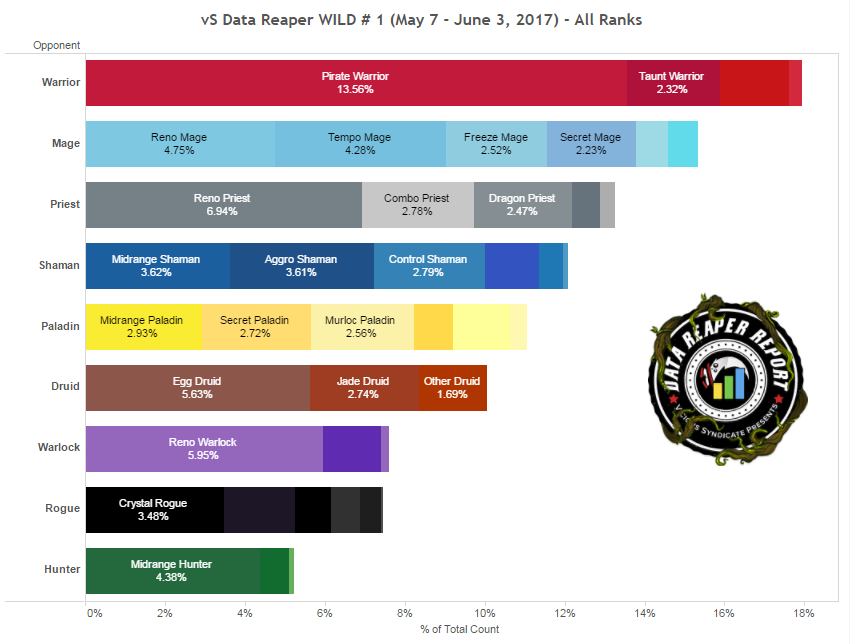
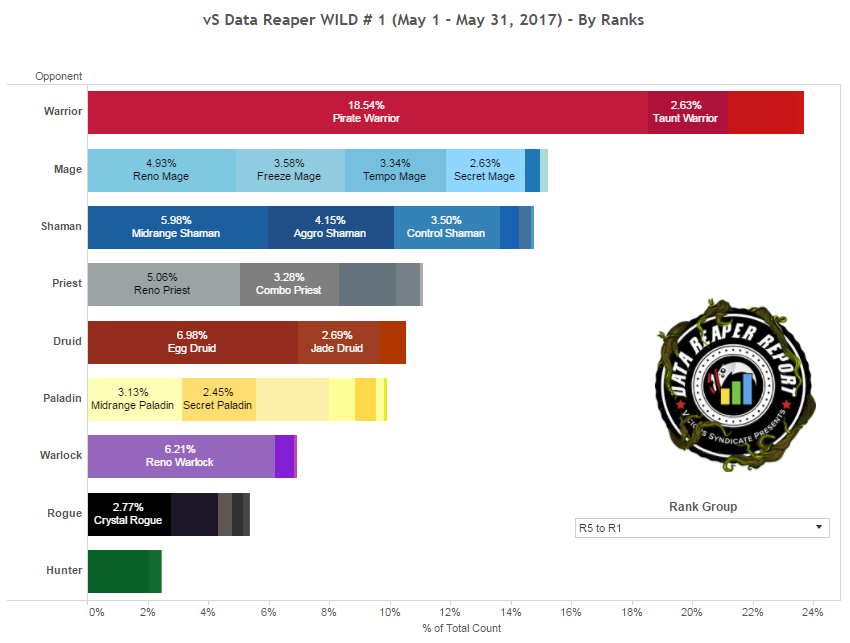
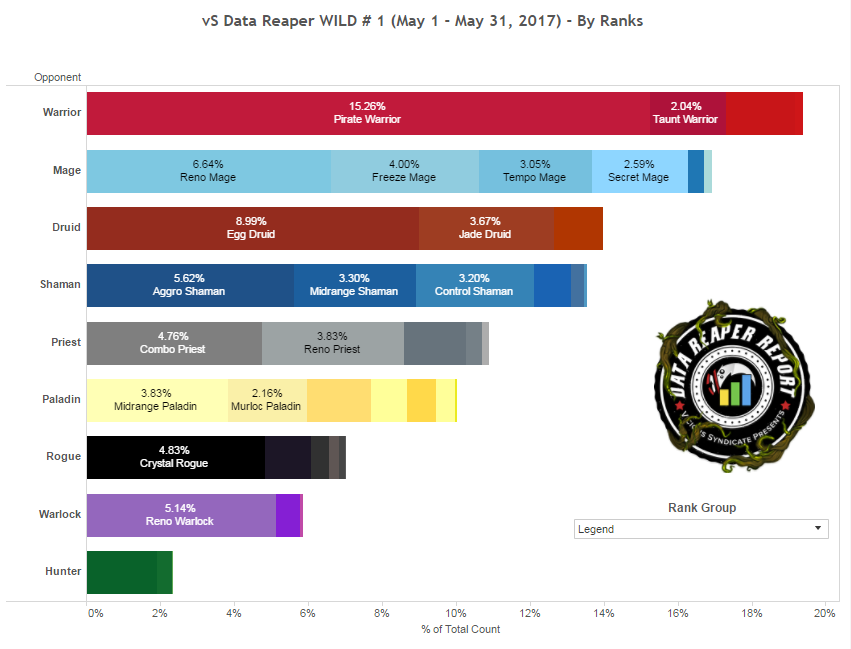

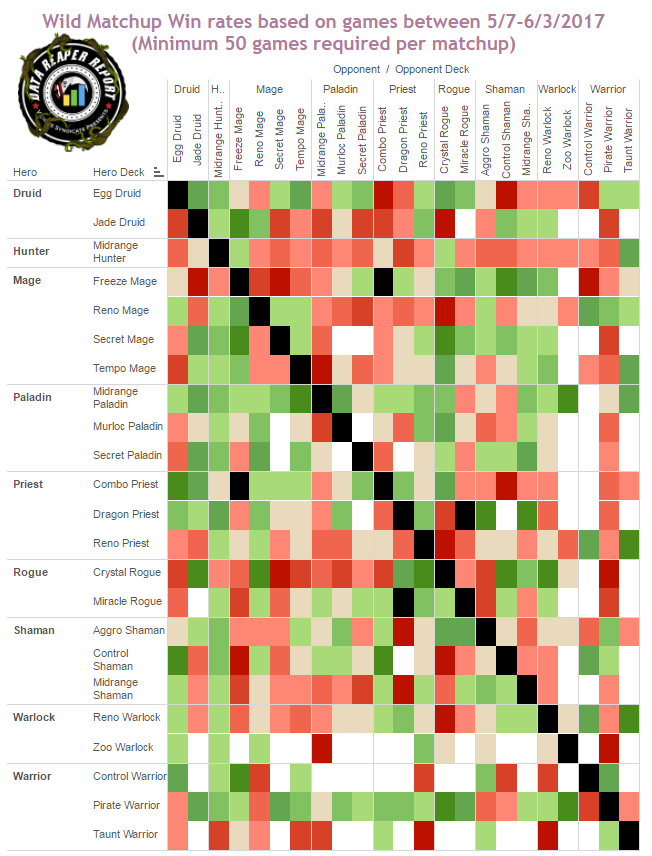
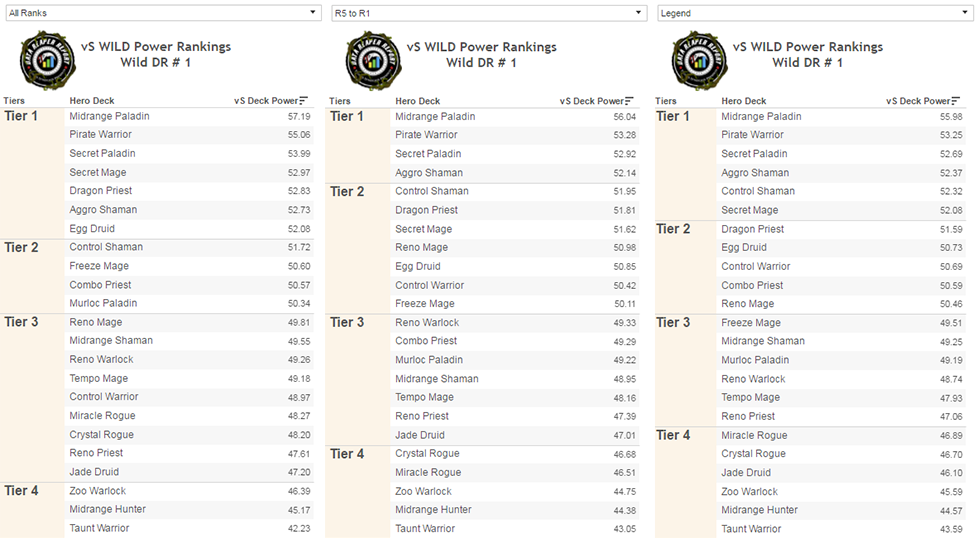










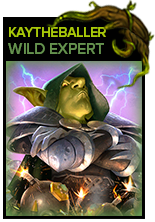
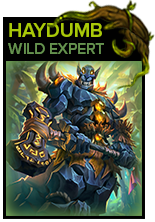
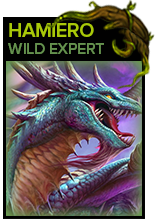
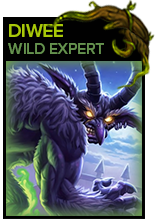
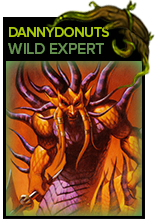
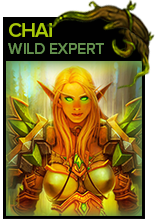
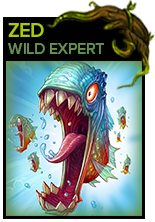
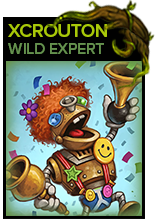
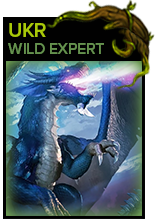
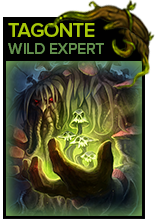
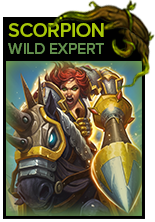
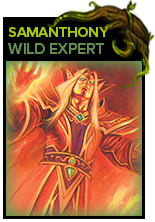
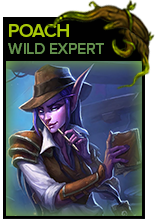



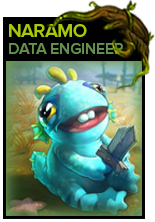

Please give us #2!!!
when a post up next wild report?
I really love this wild reaper.
Amazing work ! Love you Guys !
Great writeup. I would recommend making a few changes to do some of the same things that the Standard Data Reaper Report does:
1) Put the classes in order from most-played to least. For example, since a lot of the decklists are teched to beat Pirate Warrior– the most common deck and class– it makes sense to talk about the Warrior class first, just as the Standard Data Reaper Report does.
2) Put the decklists in the same order they are talked about in the writeup. For example, it’s a little bit weird that the Warrior section talks about Control-Pirate-Taunt, but the decklists go Pirate-Taunt-Control.
3) Group similar decklists together. For example, rather than have 12 different Shaman decklists on 12 different pages, it makes more sense to group all the Control lists on the same page, so that one can easily compare and note the differences in the lists. 12 decklist pages for Shaman could be condensed to 5– Aggro, Midrange, Control, Malygos, and Murloc.
Thanks for doing this VS, honestly huge fan of playing both modes. I believe that Wild diversity has always been pretty great, even from the days of Shamanstone. I make it a habit to play Wild Ranked in the last month before a new expansion, I would recommend other people give it a try, it’a great experience!
Malygos Rogue with a copy of Alexstrasza and only one shadow strike?
Nice
<3
Good
Beautiful work, folks! I’m also surprised that identifying Wild deck archetypes automatically wasn’t more rocky than this.